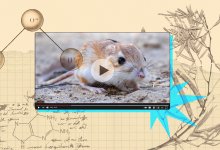9-12 High School
Explore and share tips, strategies, and resources for helping students develop in grades 9-12.
Translating Standards Into Student-Friendly Terms
Designing an effective assessment requires first deconstructing the standards into clear criteria of success that students can understand.154Your content has been saved!
Go to My Saved Content.Getting the Most Out of the Reader’s Notebook
In high school, reading instruction sometimes gets short shrift. Interactive notebooks can increase students’ intrinsic motivation to read.Your content has been saved!
Go to My Saved Content.Teaching Students How to Make Movies to Document Their Learning
Using moviemaking as a form of engagement and assessment centers students’ voices.Your content has been saved!
Go to My Saved Content.6 Foundational Ways to Scaffold Student Learning
A collection of evidence-backed tips to help students cross the bridge from confusion to clarity.Your content has been saved!
Go to My Saved Content.Making Math Review a High-Energy Game
In the 100 Squares Challenge, math review takes the form of friendly—but fierce!—competition, inspiring students to complete problems under pressure.A One-Page Chart to Support Every Student Every Day
Teachers can use this spreadsheet—free template included—to track accommodations and strengths to keep students on track and motivated.8 Creative Performance Tasks for World Language Classes
Try these ideas to move from vocabulary quizzes to activities where students communicate in real-world situations.583Your content has been saved!
Go to My Saved Content.4 Ways to Guide Disengaged Students to Try Again
There are many reasons why students disengage in school. The tips here are not a panacea, but both research and teacher experience demonstrate that they can help.30 Ways to Bring Calm to a Noisy High School Classroom
From 'finding the lull' to the magic of a dramatic whisper, these teacher-tested strategies quickly get high school students focused and back on track.Boosting Engagement in Biology With Storylines
Organizing curriculum around a central story motivates students to advance the narrative while mastering advanced material.326Your content has been saved!
Go to My Saved Content.Building Classroom Community Through Daily Dedications
When students share stories about those who have inspired and impacted them, the whole classroom feels more connected.56.8kYour content has been saved!
Go to My Saved Content.3 Ways to Help Students Overcome the Forgetting Curve
Our brains are wired to forget things unless we take active steps to remember. Here’s how you can help students hold on to what they learn.Jump-Starting Academic Learning With Movement and Dance
The benefits of movement in the classroom aren’t limited to younger students. Pairing new words and concepts with gestures or dance moves locks in understanding—and active brain breaks prime students to learn even more.25.1kYour content has been saved!
Go to My Saved Content.4 Ways to Use the Fresh Start Effect to Motivate Students
Research has shown that people put in extra effort on their goals after meaningful time markers like the start of a new year. The good news is, teachers can engineer these markers for students.3 Great Discussion Models for High School English
These models move beyond Socratic seminars to provide students with authentic, engaging class discussions.500Your content has been saved!
Go to My Saved Content.











